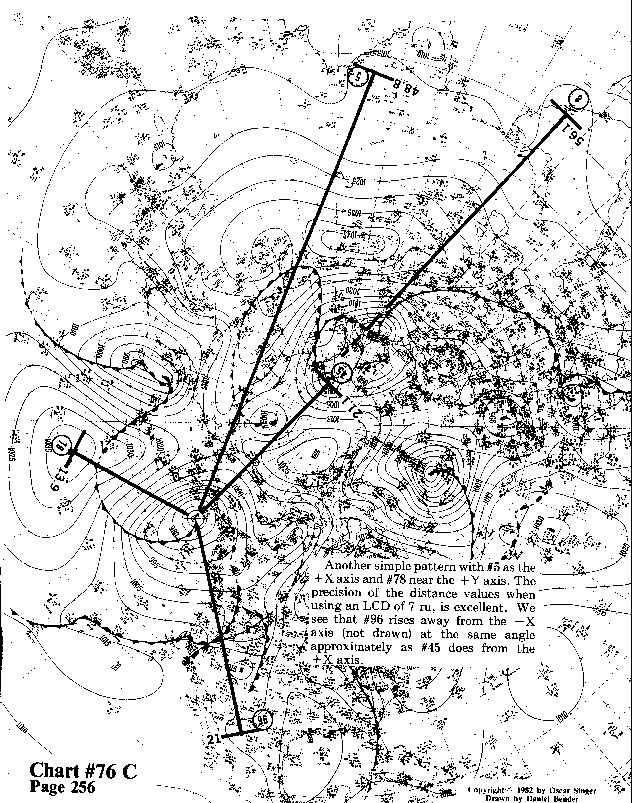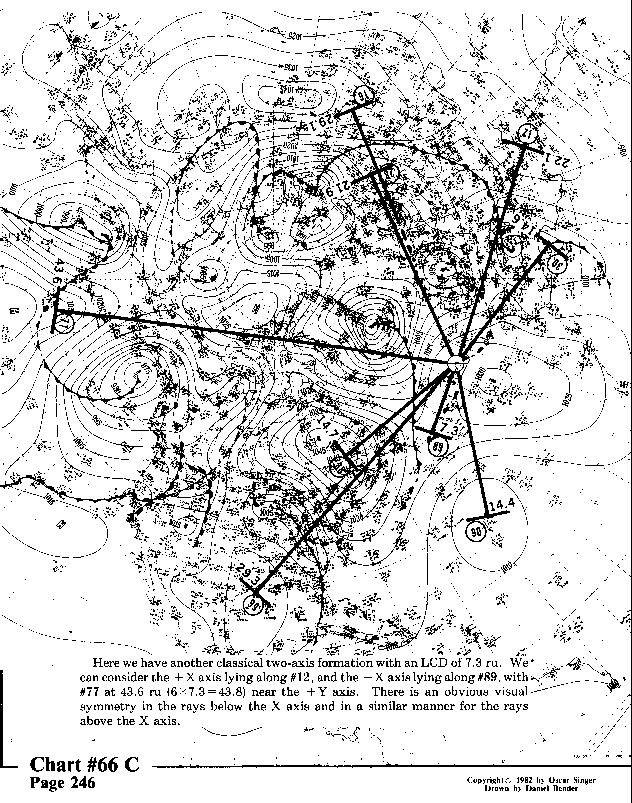
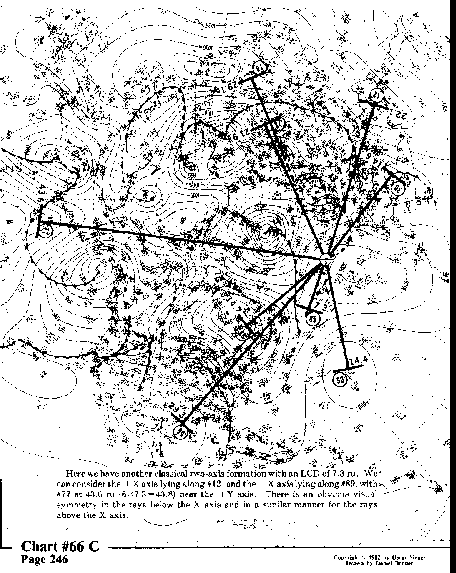
Here we have another classical two-axis formation with an LCD of
7.3 ru. We. can consider the + X axis lying along # 12, and the - X
axis lying along #89, with #77 at 43.6 ru (6x7.3=43.8) near the
+Y axis. There is an obvious visual symmetry in the rays below
the X axis and in a similar manner for the rays above the X axis.

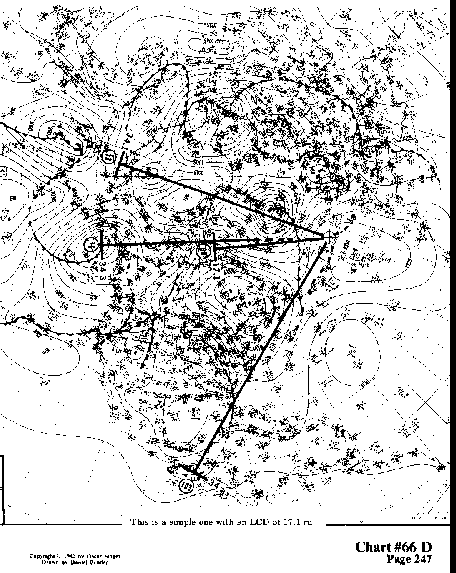
This is a simple one with an LCD of 17.1 ru.
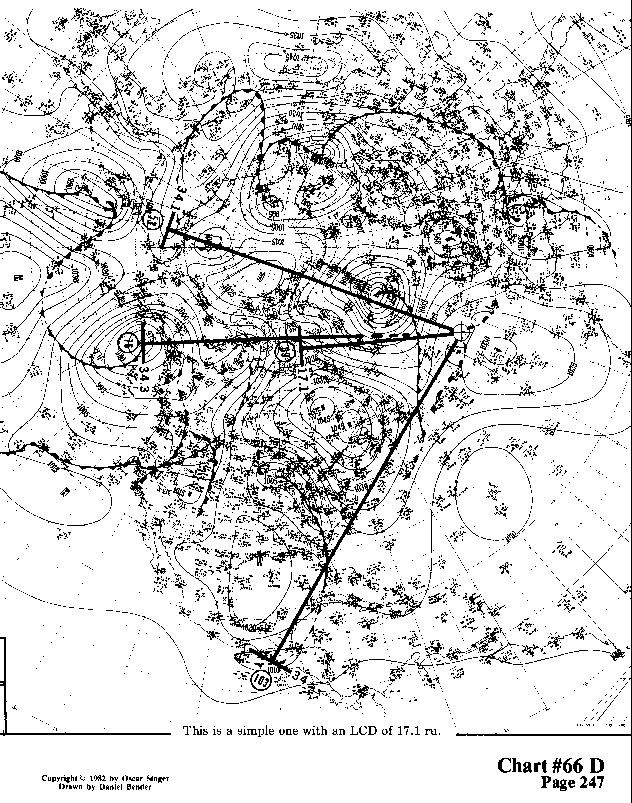
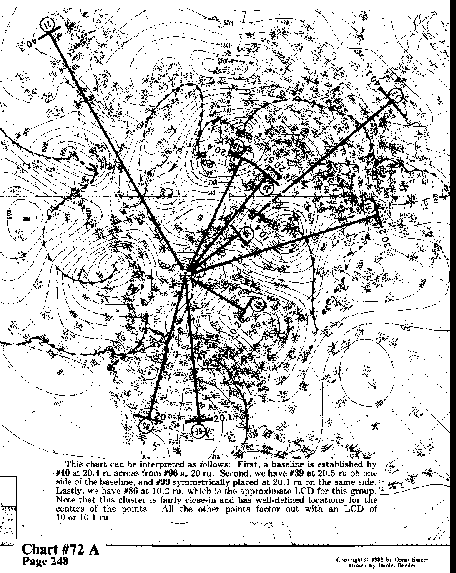
This chart can be interpreted as follows: First, a baseline is established by
#40 at 20.4 ru across from #96 at 20 ru. Second, we have #39 at 20.5 ru on one
side of the baseline, and #99 symmetrically placed at 20.1 ru on the same side.
Lastly, we have #86 at 10.2 ru, which is the approximate LCD for this group.
Note that this cluster is fairly close-in and has well-defined locations for the
centers of the points. All the other points factor out with an LCD of 10 or 10.1 ru.
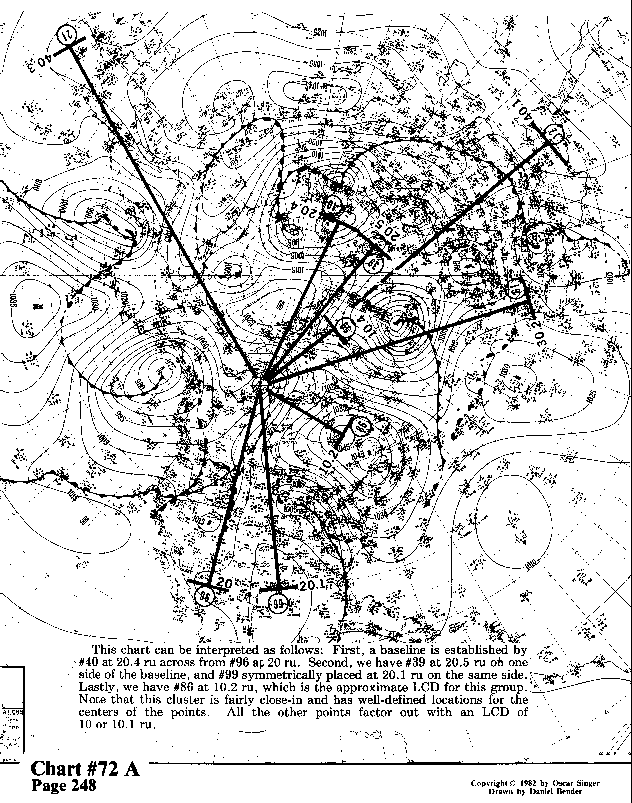
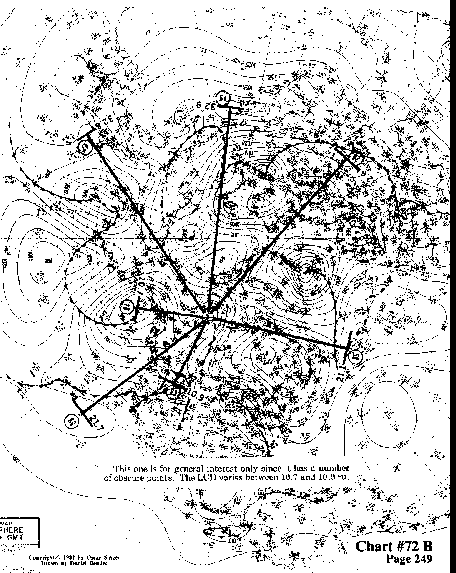
This one is for general interest only since it has a number of
obscure points. The LCD varies between 10.7 and 10.9 ru.
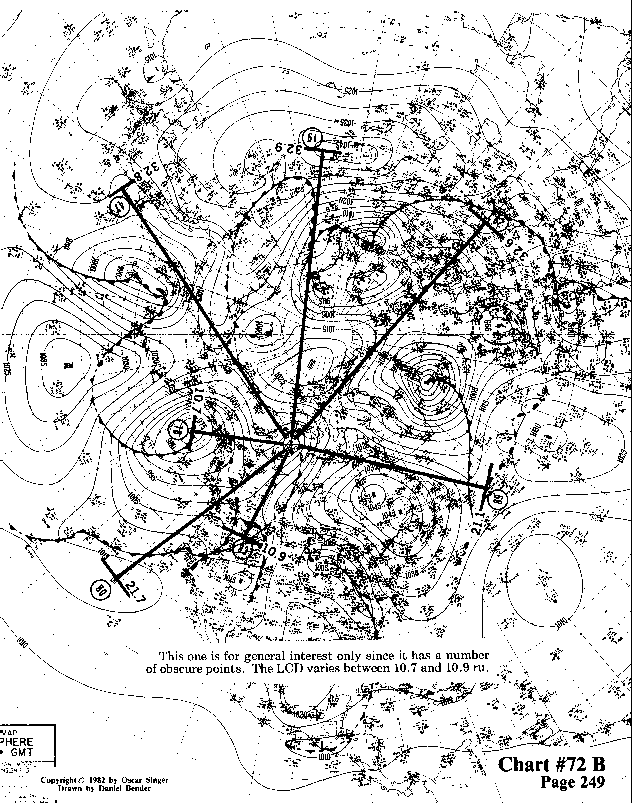
Chart #72 C
This rake is a zinger. Let us consider that #53 (16.4 ru) or #21 (40.3 ru} is close to theX axis; let #91 (16.2 ru) be the +X axis; and let #60 (16.3 ru) be the +Y axis. Next we see a classical, close in, ring of points at approximately 16.3 ru. We now note (1) the angle of 48.2 cu between #60 and #91 is almost three times their distance from #72, and (2) the great circle distance from #60 to #53 is 24.2 ru (not entered on this chart to reduce clutter).
If you haven't guessed by now, we are using an LCD of 8.1 to 8.2 ru. We now move out to the ring or wavefront in the neighborhood of 24 ru. We see three points (#36, #42, and #49) at 24.8 ru and one at 24.5.ru (#78). Upon further inspection, we see that they are grouped into two pairs. #36 of one pair is tilted a certain angle to the left of the + Y axis, and we find that #49 of the second pair is tilted below the X axis by the same amount. We see, therefore, that this cluster of four points has a rotational symmetry with respect to the axes. In addition, the great circle distance between #42 and #36 is a neat 12 ru.
We now move out a little farther and find three points (#47, #19, and #29), fairly evenly spaced at 32.8,32.9, and 32.6 ru. Farther still, we find #21 at 40.3 ru. At this time, we run into another point that I have not labeled due to general uncertainty, but there is no doubt that it is there. This point lies along the ray line of #5 and is halfway between #19 and #5. This would give us a value of about 40 ru, which would naturally be another ray at the 40 ru range on this chart. The change in curvature of the isobars and the great spacing between the isobars leave more than enough room for another point. Finally, as far out as we can go on this map, we find the ringlet at 48.3 and 48.9 ru.
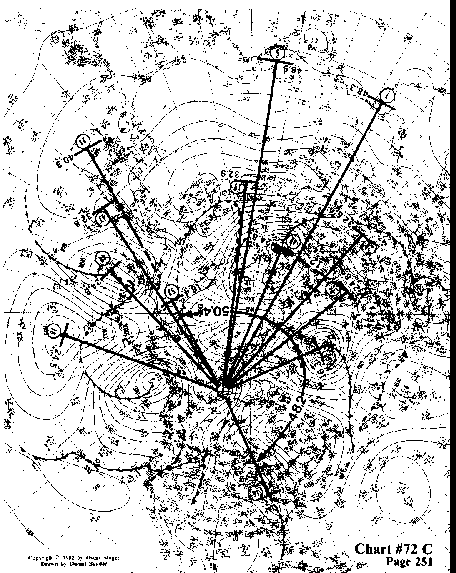

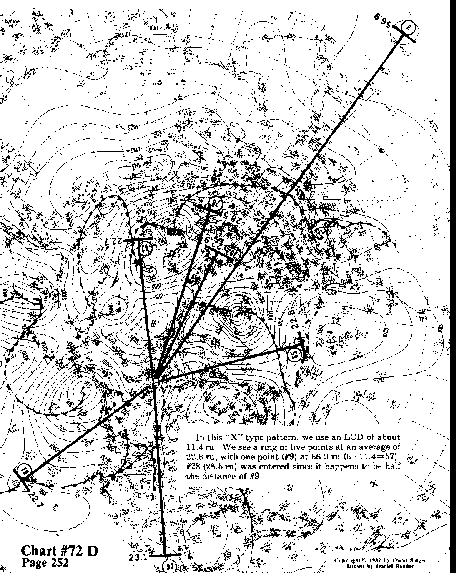
In this "X" type pattern, we use an LCD of about 11.4
ru. We see a ring of five points at an average of 22.8 ru, with
one point (#9) at 56.9 ru (5x 11.4=57). . #28 (28.5 ru) was entered
since it happens to be half the distance of #9.
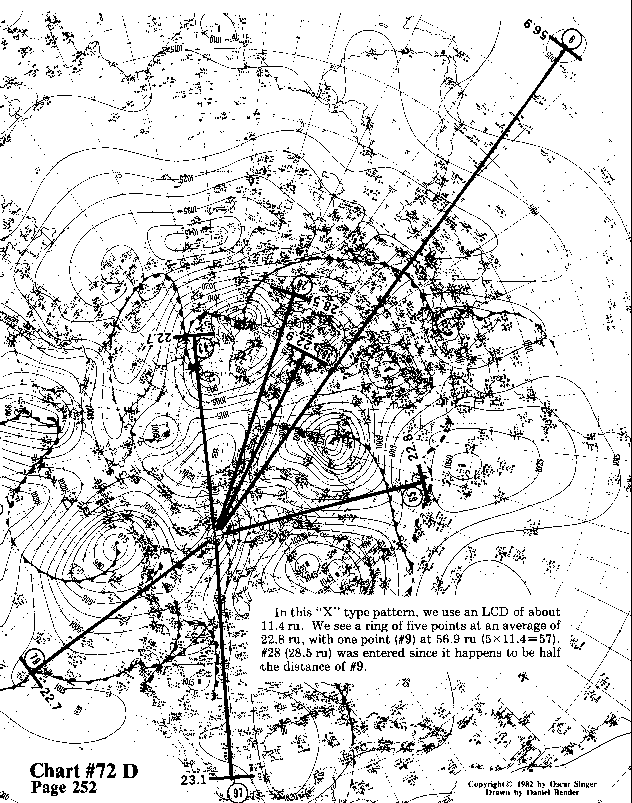
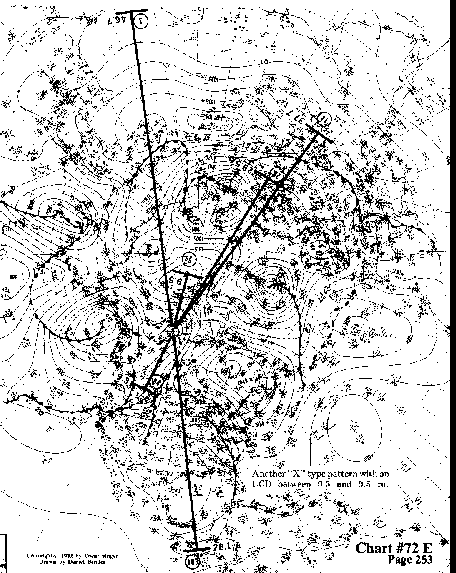
Another "X" type pattern with an LCD between 9.3 and 9.5 ru.
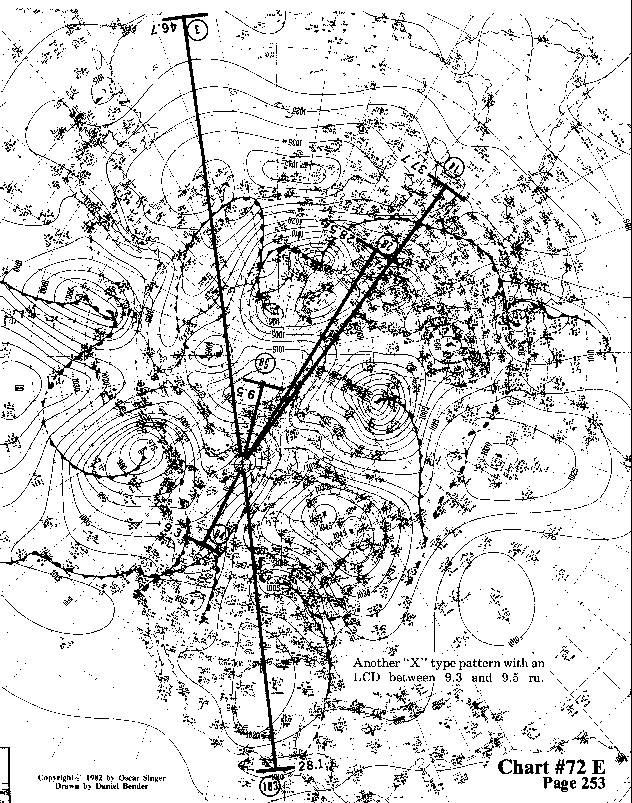
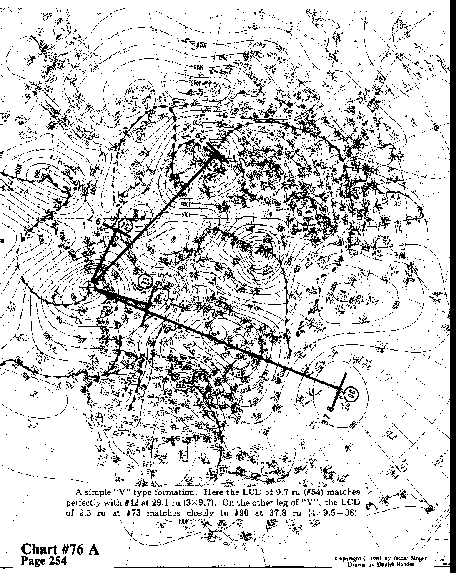
A simple "V" type formation. Here the LCD of 9.7 ru
(#54) matches perfectly with #42 at 29.1 ru (3x9.7). On the other
leg of "V", the LCD of 9.5 ru at #73 matches closely
to #90 at 37.8 ru (4x9.5=38).
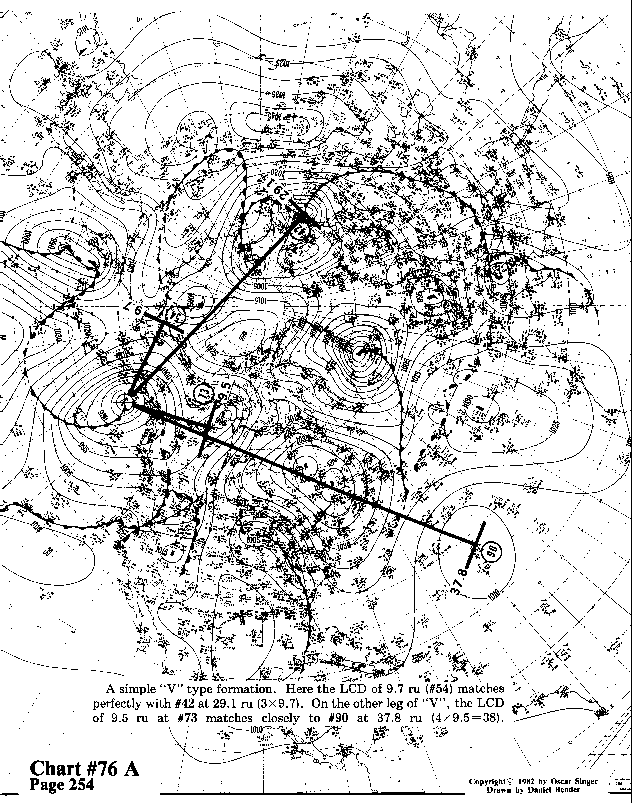
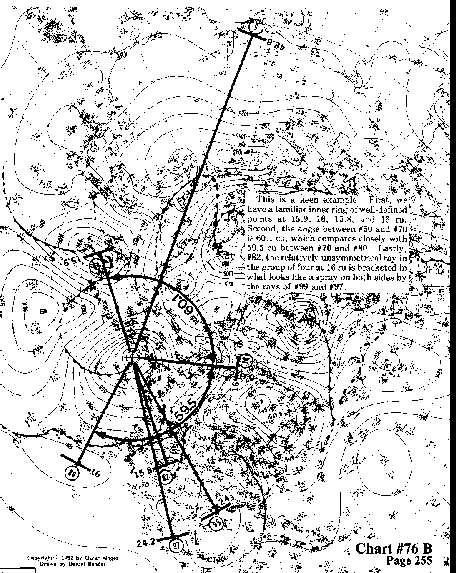
This is a keen example. First, we have a familiar inner ring of
well-defined points at 15.9, 16, 15.8, and 16 ru. Second, the angle
between #50 and #70 is 60.1 cu. which compares closely with 59.5
cu between #70 and #80. Lastly, #82, the relatively unsymmetrical
ray in the group of four at 16 ru is bracketed in what looks like
a spray on both sides by the rays of #99 and #97.
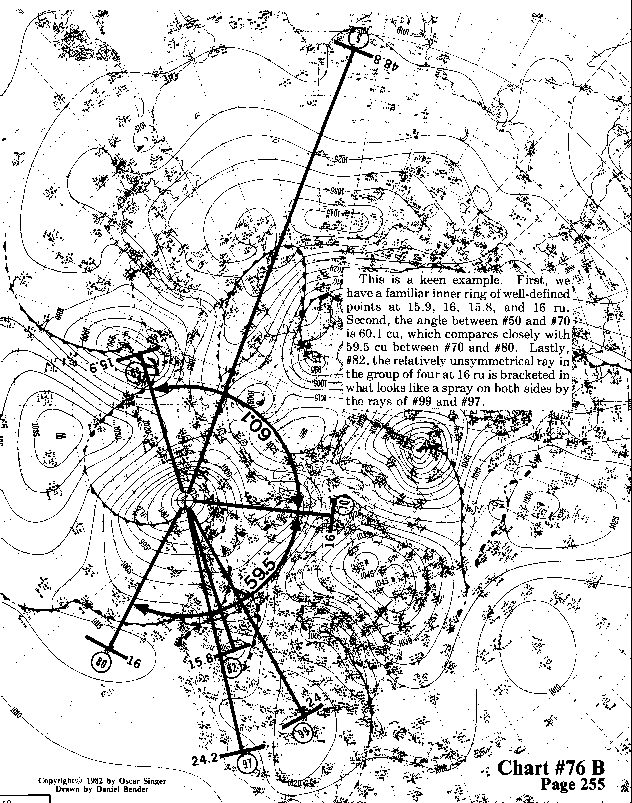
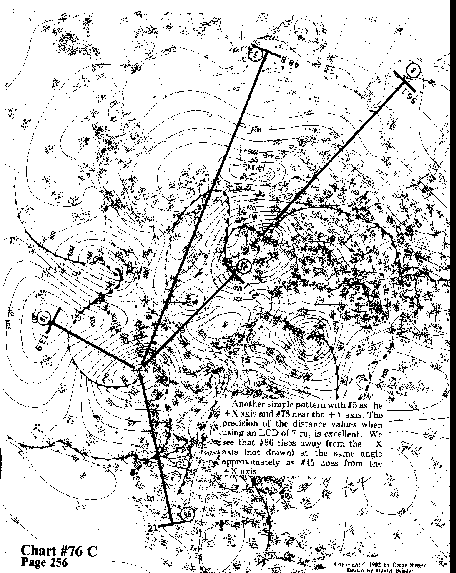
Another simple pattern with #5 as the + X axis and #78 near the
+Y axis. The precision of the distance values when using an LCD
of 7 ru, is excellent. We see that #96 rises away from the -X
axis (not drawn) at the same angle approximately as #45 does from
the +X axis.
